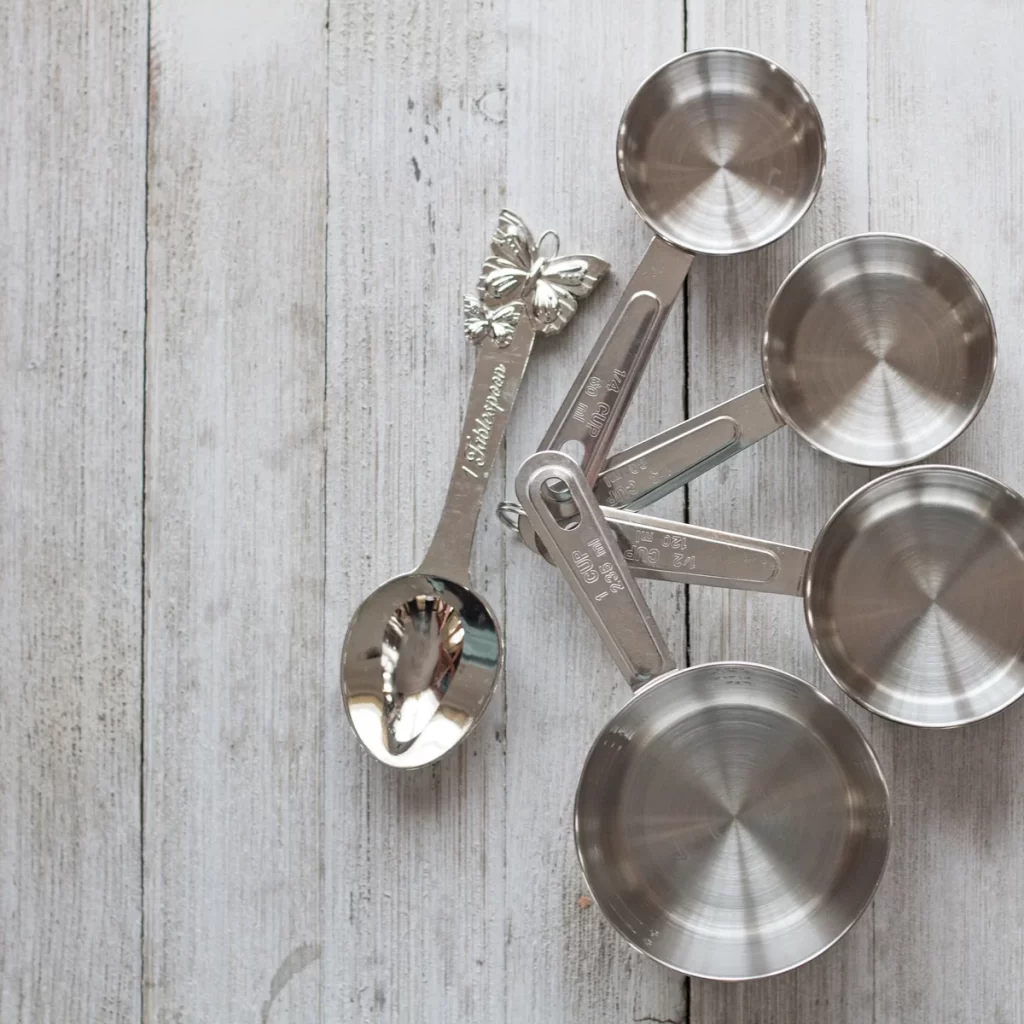How Many Tablespoons Are in 1/2 Cup? A Comprehensive Guide
Understanding the conversion between cups and tablespoons is crucial for accurate measurements in cooking and baking. This guide will delve into the specifics of how many tablespoons are in 1/2 cup, provide a step-by-step conversion process, and include a FAQ section to address common questions.
The Conversion Formula
To convert cups to tablespoons, you need to know that there are 16 tablespoons in 1 US cup. This conversion factor is the key to determining the number of tablespoons in any fractional cup measurement.
- Identify the Conversion Factor:
- 1 US cup = 16 tablespoons.
- Apply the Conversion:
- To find out how many tablespoons are in 1/2 cup, you multiply 1/2 by the conversion factor of 16 tablespoons per cup.
- The calculation is: Tablespoons=0.5×16=8.
How Many Tablespoons in 1/2 Cup?
Using the conversion formula, we can determine that:
- 1/2 US cup = 8 tablespoons.
This means that if a recipe calls for 1/2 cup of an ingredient, you can substitute it with 8 tablespoons of the same ingredient.
Step-by-Step Conversion Process
Here is a detailed step-by-step guide to convert 1/2 cup to tablespoons:
- Identify the Measurement:
- The recipe calls for 1/2 cup of an ingredient.
- Apply the Conversion Factor:
- Multiply 1/2 by the number of tablespoons in one cup (16).
- Calculation: 0.5×16=8 tablespoons.
- Result:
- Therefore, 1/2 cup is equal to 8 tablespoons.
Practical Applications of the Conversion
Understanding the conversion from cups to tablespoons is essential for various cooking and baking tasks. Here are some practical applications where this conversion is particularly useful:
Recipe Scaling
When scaling recipes up or down, accurate conversions are critical to maintain the balance of ingredients. For example, if a recipe calls for 1 cup of sugar and you need to halve the recipe, knowing that 1/2 cup equals 8 tablespoons ensures you use the correct amount.
Ingredient Substitution
Sometimes recipes call for ingredients in different units, such as cups for dry ingredients and tablespoons for liquids. Being able to convert between these units seamlessly helps in substituting ingredients without altering the recipe’s integrity.
Measuring Ingredients Without Specialized Tools
Not everyone has a set of measuring cups, especially when traveling or in emergency situations. Knowing the conversion from cups to tablespoons allows you to measure ingredients using a tablespoon measure, which is often more readily available.
Common Mistakes and Troubleshooting
When converting between cups and tablespoons, there are a few common mistakes to avoid:
- Incorrect Conversion Factor:
- Ensure you use the correct conversion factor of 16 tablespoons per cup. Mistaking this for another unit can lead to significant errors in your recipe.
- Rounding Errors:
- When dealing with fractional cups, avoid rounding the conversion to the nearest whole number unless the recipe allows for such approximations. For instance, 1/3 cup is exactly 5 1/3 tablespoons, not 5 or 6 tablespoons.
- Dry vs. Liquid Ingredients:
- While the conversion factor remains the same for both dry and liquid ingredients, the actual volume can vary slightly due to differences in density. However, for most recipes, this difference is negligible.
Advanced Conversions and Considerations
For more complex recipes or when dealing with specific ingredients, additional considerations may be necessary:
- Metric Conversions:
- If working with metric measurements, remember that 1 metric cup is approximately equal to 16 2/3 tablespoons. This can be important when following international recipes or using metric measuring tools.
- Ingredient Density:
- Some ingredients, like flour or sugar, can be packed differently, affecting their volume. For precise measurements, it’s best to use a digital kitchen scale to measure ingredients by weight rather than volume.
- Recipe Adjustments:
- When converting between cups and tablespoons, it’s crucial to adjust other ingredients accordingly to maintain the recipe’s balance. This is particularly important in baking, where small changes can significantly affect the final product.
Table: Common Cup to Tablespoon Conversions
| Fraction of Cup | Number of Tablespoons |
|---|---|
| 1/8 cup | 2 tablespoons |
| 1/4 cup | 4 tablespoons |
| 1/3 cup | 5 1/3 tablespoons |
| 1/2 cup | 8 tablespoons |
| 2/3 cup | 10 2/3 tablespoons |
| 3/4 cup | 12 tablespoons |
| 1 cup | 16 tablespoons |
FAQ
Q: How many tablespoons are in 1/2 cup?
A: There are 8 tablespoons in 1/2 US cup.
Q: What is the conversion factor for cups to tablespoons?
A: The conversion factor is 16 tablespoons per 1 US cup.
Q: How do I convert 1/2 cup to tablespoons?
A: Multiply 1/2 by 16, which equals 8 tablespoons.
Q: Is the conversion different for metric cups?
A: Yes, the conversion for metric cups is slightly different. One metric cup is equal to 16 2/3 tablespoons, so 1/2 metric cup would be approximately 8 1/3 tablespoons.
Q: Can I use this conversion for both dry and liquid ingredients?
A: Yes, the conversion applies to both dry and liquid ingredients.
Q: How many teaspoons are in 1/2 cup?
A: Since 1 tablespoon is equal to 3 teaspoons, 1/2 cup (which is 8 tablespoons) would be equal to 24 teaspoons.
Additional Resources
For more detailed information on measurement conversions and kitchen metrics, you can refer to the following Wikipedia article:
- Tablespoon: Tablespoon – Wikipedia
This guide has provided a comprehensive overview of how to convert 1/2 cup to tablespoons, along with a step-by-step process and a FAQ section to address common questions. By understanding this conversion, you can ensure accurate measurements in your cooking and baking endeavors.
Conclusion
Accurate measurements are crucial in cooking and baking, and knowing how many tablespoons are in 1/2 cup is a fundamental conversion that can help you achieve the desired results in your recipes. By following the simple conversion process outlined above, you can confidently substitute cups with tablespoons in any recipe.



